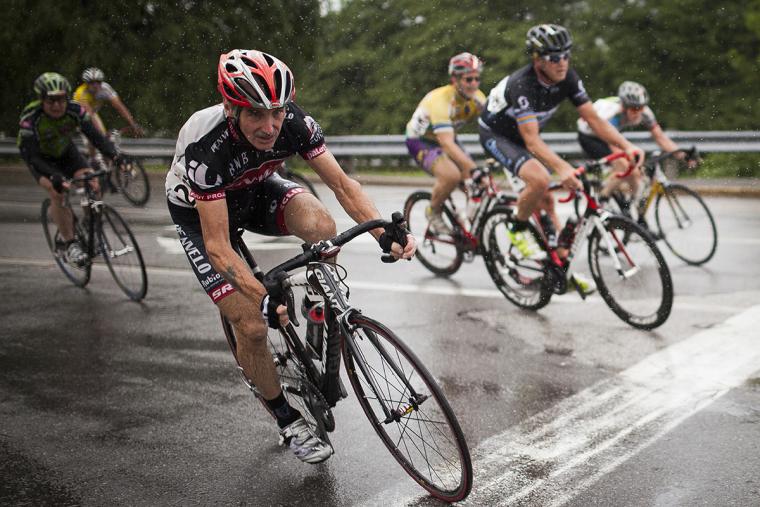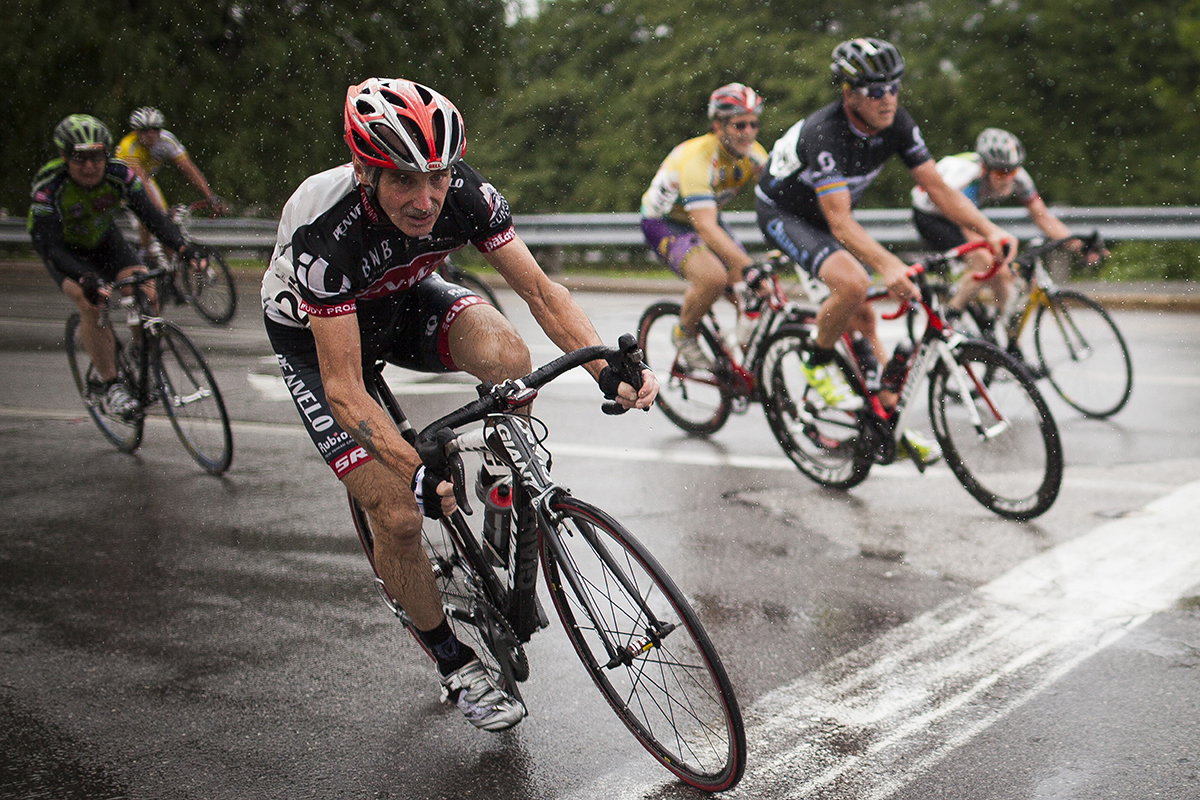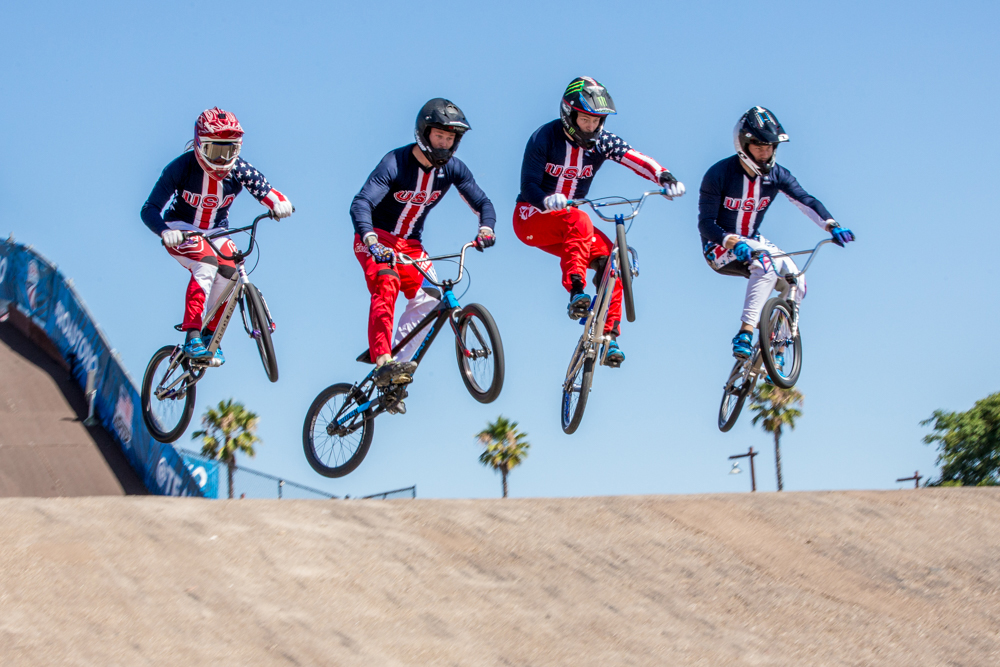

Membership Initiative with USA Triathlon: In late April of this year, USA Cycling and USA Triathlon announced a new partnership, offering joint programs and promotions to better serve existing members while attracting new participants to both sports.
This partnership was the first of its kind and was highlighted by a joint annual membership option (at a cost savings to all members) to provide access to all USA Triathlon- and USA Cycling-sanctioned events. The organizations are now able to cross-promote their respective National Championships and select sanctioned races to each other’s members in an effort to expand racing opportunities for both groups.
In addition, USA Triathlon and USA Cycling will be working together on promotional and educational programs benefitting athletes who compete in both sports. Landing pages are available on usacycling.org and usatriathlon.org offering content specific to cyclists who want to become triathletes, and vice versa.
While it’s obvious that this partnership helps both our organizations expand their existing membership bases, it also provides something very valuable and unique to athletes. From what we’ve heard from triathletes, cycling was an area where expert information hadn’t previously been available. As members of USA Cycling, triathletes will now have access to our information and to our coaches, and they can learn good training and racing techniques.
We look forward to being able to review our progress in this area next year.
Electric Bicycles (e-bikes): E-bikes are definitely a growing sector of the market, and something we are embracing. We are starting to see more events offering e-bike divisions, and it really is increasing their participation. The UCI (Union Cycliste Internationale, the international governing body of the sport) has already added e-bike divisions to major events; in fact, the recent world championships in mountain biking had one.
We are welcoming the e-bike movement because cycling is one of the few sports that we can say is a sport for a lifetime, from the two-year-old who starts out on a toddler bike without pedals, to the 80- or 90-year-old who is still out cycling and possibly even competing in senior games or in age divisions of races.
When you add e-bikes into your events, you create a way to welcome people who perhaps don’t have the mobility they once did – or who need the assistance an e-bike can provide. If it keeps them cycling (maybe they’re not not even competing, but just going on recreational group rides or touring with their friends), it’s still a win for the sport as a whole (and for us as well).
At this point, it’s up to individual race directors and event companies whether they want to add in e-bike divisions. We can supply information to race directors who want to learn more and we encourage them to look into it. We expect this growth to continue as more athletes become aware of e-bikes as a viable option. Particularly now, as cities are adding walking, running and cycling trails to parks, there’s more of an opportunity than ever to remain active in a safe setting.
Growth in Gravel: E-bikes aren’t the only place where participation is growing, though. Bike shops tell us more people are buying gravel bikes, and we’re certainly seeing plenty of gravel grinders offered on the event side.
It’s easy to guess why we’re seeing this particular trend – on a trail, you’re less likely to meet up with the hazards that traffic can cause. Roads aren’t as safe as they used to be, particularly without a separate bike lane. And as distracted driving increases, it’s likely this growth of off-road cycling will continue as well.
Cyclocross is Also Up: Cyclocross is one of the fast-growing disciplines in cycling, and we’re looking at growth to continue here as well. We had a great championship in Louisville last year, and this year, we’re headed for Tacoma, Washington. After that, the championship will be in Chicago, which means three different areas of the country will be able to enjoy this discipline.
Changes in Championships: USA Cycling’s calendar of championship events has changed a bit as well; we previously offered a total of 17 national championships for various disciplines (such as road, cyclocross, BMX, mountain biking, para-cycling, track, etc.) at various levels (such as elite, masters, junior, collegiate and others). We took a look at the things we did the best and made some adjustments. Among the events we cut from our calendar were our fat bike national championships.

Right now, the U.S. is a force in BMX, and we expect very good performances at the Olympics, which should serve to boost that discipline still further. The Olympics as a whole tend to raise the profile of cycling, so we’re looking forward to the Games across the entire spectrum of our sport. At the same time, we continue to seek out good partners nationwide to host our events.
What is it that makes a city a good host community?
We like to partner up with a strong local organizing committee such as a sports commission or a convention and visitors bureau. They are good at creating relationships that allow us to highlight local businesses and attractions.
That being said, when we do venue selection, the following are things we look for, in no particular order:
•Appropriateness of venue/course from a competition side
•Ease of travel to and from the venue city
•Accommodations in a variety of price points
•Geographical rotation of event (movement of event through the country every few years)
•The presence of a strong cycling community or club; this generally means there is a built-in fan base and a lot of good publicity for events comes by word of mouth. Our sport does not have the large marketing dollars, but it has a very strong local community.
When it comes to event placement, USA Cycling will meet with cities at several conference, such as Sports ETA. We’ll then meet with cities one-on-one if they express interest. Once the event location/city is picked, that group is encouraged to attend one of our National Championship events, where the representatives will receive a behind-the-scenes tour to fully understand all aspects of the event.
If a city is interested in bidding on an event, USA Cycling will have RFPs available on the website for review.
The potential economic impact of hosting events can vary, depending upon the type, scope and location of the event, but as an example, in 2014, our Professional Road and Time Trial National Championships in Chattanooga, Tennessee, recorded the following numbers:
•Economic impact of $5.9 million within the local community of Chattanooga
•Total average daily visitor spend: $180.30
•Weekend spectators: 30,000
•Time trial: 5,000
•Road race: 25,000
•35 percent were new attendees (10,500)
•60 percent were residents of Tennessee
•Extensive media coverage in 16 countries
USA Cycling’s Calendar, listing nationwide events, is found on our website, under Events. Both past and upcoming events are listed. The calendar includes information on the discipline, date, location and more. We also have a section with resources for race directors, including information on permitting as well as other services, such as online event management and marketing tools, including our online registration platform, access to event calendars and other materials. SDM
Lehigh Valley, Pennsylvania: Cycling Central
Tucked away in the countryside of Lehigh Valley, Pennsylvania, sits Trexlertown – a name widely known throughout the cycling community. Here, you’ll find the Valley Preferred Cycling Center, an impressive outdoor velodrome with a 333-meter-long concrete track featuring 28-degree banked turns, with straightaways banked at 12 degrees – giving the venue its nickname as the ‘Concrete Crater.’ Athletes from all around the world travel to Lehigh Valley to train and race at this facility, taking advantage of cycle-friendly roads that connect the venue to neighboring communities. The summer racing program is noted as a favorite among Olympic hopefuls on their quest to qualify for the games.
The Valley Preferred Cycling Center hosts a premier weekly racing series each summer, as well as national championships, large group rides, Gran Fondos, charity rides, UCI cyclocross events and more, making it a nationally recognized go-to destination for cycling.
Tucson: Sunny Days and Great Cycling
From recreational riders to serious athletes, cyclists come to Tucson for its promise of sunny days and to ride among the giant cacti of the Sonoran Desert. It’s easy to find a cycling adventure with bike lanes all over town and five surrounding mountain ranges.
When winter shuts down cycling in most other American cities, Tucson enjoys highs in the upper 60s, making it the perfect place for winter training or to simply escape frigid temps.
Serious cyclists can take on Mt. Lemmon, a 7,000-foot elevation gain – from desert floor to pine forests on the winding Catalina Highway, while urban riders can explore the metro area via The Loop, a paved 131-mile trail.
A true community for cyclists, Tucson hosts events like 24 Hours in the Old Pueblo, the largest mountain biking event of its kind, and El Tour de Tucson, one of the largest road cycling events in the United States.

